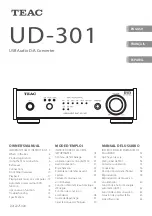
1
INTRODUCTION
The Kenton Electronics Pro-2000 mkII multi channel MIDI to CV converter, has been designed to give
you maximum flexibility, whilst maintaining ease of use.
The converter has 10 completely independent sections - called channels A, B, C & D plus Aux’s 1 to 6.
Each can be assigned its own MIDI channel, and controlled independently from the others.
The Pro-2000 mkII has two independent, MIDI programmable LFOs that can modulate both the CV
outputs, and the auxiliaries. Each of the CV channels A & B has a portamento function.
There are also many other features designed to make the Pro-2000 mkII as flexible as possible to allow
as much control as possible over your analogue synthesizers.
Please take some time out to read all through this manual which will, hopefully explain everything you
need to know.
The Pro-2000 mkII has a thorough MIDI system exclusive specification for those who wish to perform
data dumps or real-time editing from their computer sequencer or generic patch editor. See the SysEx
section at the back of the manual.
The Pro-2000 mkII auxiliary outputs have the following additional functionality, the first two of which
allow the Pro-2000 mkII to control a further 3 CV/Gate synths if required (making a total of 5) :
V/Oct from Notes - Gate from Notes - Trig Pulse (for synths requiring a trig as well as a gate i.e.
ARP2600)
The Pro-2000 mkII has intelligent MIDI sync. This means that if MIDI sync is selected and is in operation,
the 2000 will automatically recalculate the LFO speed in order to fit a whole LFO waveform between
MIDI clocks (or multiples of clocks depending on the setting of sync divide)
A full 128 note range is now implemented on all outputs giving CV out.
Auto portamento feature added to enable playing style to dictate when portamento is to be used.
The non-volatile memory has been increased from 7 to 24, so even more setups can be stored.
Jan 2008 update –
Polyphonic Capability added
Fixed time portamento added for Channels A + B in addition to existing fixed rate
Sustain now available for Aux outputs when in Volt/Octave mode
THE Pro-2000 mkII CHANNELS
CHANNELS A & B
These are for controlling analogue synths such as the SCI PRO-1, Roland SH-101, MS-20, CS-5 or indeed
almost any other synths with CV and Gate or Hz/V and Trig inputs.
Note, the CV output for controlling the pitch uses one of two (selectable) scaling methods: the Volts
per octave (V/oct) pitch scaling system, which is the most common system used in analogue synths,
as used by Roland, SCI, Oberheim and Moog synths. The other system is called Hertz per volt and is
used by synths such as Korg & Yamaha, (MS20, MS10, CS5). The Pro-2000 has been designed to handle
these synths as well, it is simply a case of switching between the two systems from the front panel. (See
CV/Hz Select - later)
Some synths do not have CV, Gate or Filter inputs, such as the TB-303. We can fit or supply socket kits
for most monosynths that do not have inputs. See our website for details (www.kenton.co.uk)



































